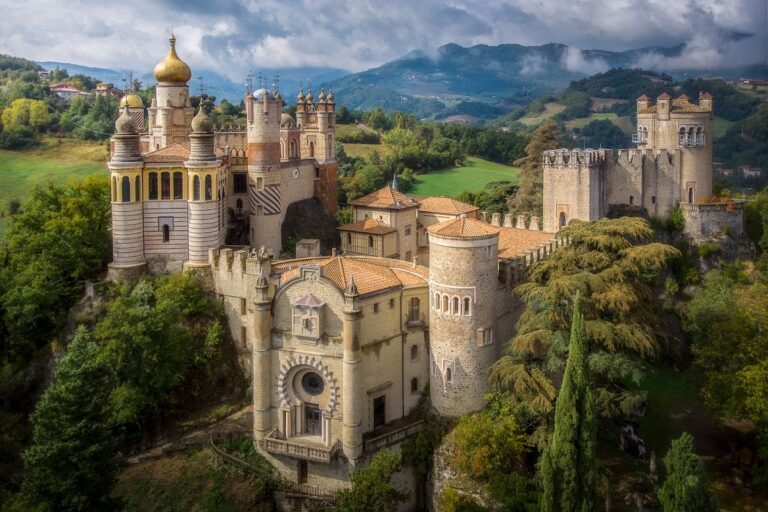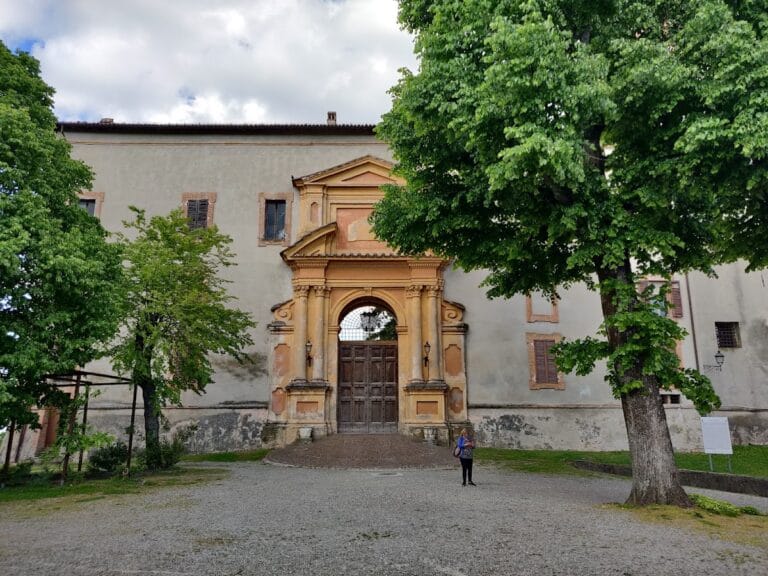Castello di Sestola: A Historic Fortress in Italy
Visitor Information
Google Rating: 4.4
Popularity: Low
Google Maps: View on Google Maps
Official Website: escamadul.it
Country: Italy
Civilization: Unclassified
Remains: Military
History
Castello di Sestola stands in the town of Sestola, Italy, occupying a commanding position built originally by early inhabitants of the area, with human presence traced back to the Bronze Age. The earliest known fortification on this site, referred to as Castrum Sextulae, appears in written records from 753 AD. At that time, King Astolfo of the Lombards granted the surrounding lands to Abbot Anselmo, founder of the Abbey of Nonantola, marking the beginning of documented medieval significance for the fortress.
During the Middle Ages, from the 13th century onward, control of the fortress was heavily contested between the nearby cities of Modena and Bologna. Ultimately, the castle came under the rule of the Este family following formal submissions by Obizzo II in 1288 and Obizzo III in 1336. From 1337, it served as the residence of the Governor of Frignano, an official appointed by the Este dukes tasked with administering the region.
In 1521, papal forces briefly captured Sestola, but control reverted to the Este family soon after the death of Pope Leo X. The medieval fortress suffered destruction during ongoing conflicts, leading Duke Alfonso II d’Este to order its demolition. He commissioned a new fortress designed specifically to meet the demands of 16th-century warfare, understood to involve firearms and artillery. The architect Marco Antonio Pasi oversaw the construction, which began in 1563 and extended over nearly two decades.
Following the decline of its military role, the castle was repurposed in the 19th century. In 1816, it was converted into a penitentiary, a function it maintained until 1866. The 1820s brought the planting of a pine forest nearby on the order of Francesco IV, adding a natural element to the site. Later in the century, the fortress hosted a military meteorological observatory, capitalizing on its location between the plains and Monte Cimone’s summit observatory. Some buildings adjacent to the castle accommodated children from the “Umberto I” Institute for rachitic children, reflecting a social welfare use.
In the 20th century, the fortress was adapted again to serve as an elementary school with boarding facilities, supported by the Associazione Nazionale Enti Assistenziali (ANEA). Over centuries, the Castello di Sestola thus transitioned from a Bronze Age hilltop settlement to a Lombard fortification, then a contested medieval stronghold, a Renaissance fortress, a prison, and finally an institution for public service.
Remains
The Castello di Sestola is a fortress built in the 16th century on a natural rocky outcrop, designed to overlook the surrounding valleys and protect the southern approaches to the Frignano area. Its construction follows the style and techniques typical of military architecture adapted to resist the firearms used in its era. The fortress sits adjacent to the earliest village districts, integrating naturally with the rocky terrain.
One of the most striking features is the tower, which rises above the fortress with a panoramic terrace providing a full 360-degree view of the landscape. Informational panels are installed here, enhancing understanding of the surrounding territory. On the tower’s ground floor, a small rotating exhibition called “Un angolo d’arte” displays contemporary artworks, making use of this historical space for cultural activities.
Inside the castle, several museums occupy former functional spaces that illustrate different aspects of local history and culture. The Museum of Mechanical Musical Instruments is situated in what once served as the Governor’s apartment, showcasing a collection of 120 pieces spanning from the 1600s to the modern period. This displays the rich tradition of musical craftsmanship in the region.
The Museum of Mountain Civilization resides in the buildings that formerly held the stables and archive, exhibiting tools, clothing, and other materials connected to mountain life. These artifacts reflect the everyday experiences of those who lived in this mountainous environment over time.
A permanent exhibition known as the “Stanza dei ricordi” is dedicated to Teresina Burchi Reiter, a soprano native to the area. This room contains her costumes, documents, and photographs, preserving the memory of her artistic career within the castle’s walls.
The prison section of the fortress maintains inscriptions, plaques, columns, and various artifacts that reveal its period of use as a penitentiary. Among the notable preserved artworks are frescoes devoted to Saint John the Baptist, transferred from the church of Roncoscaglia, a nearby hamlet. These artworks are a valuable example of religious art preserved inside the castle.
Together, these elements illustrate the layered history of the Castello di Sestola, blending defensive military features with cultural, administrative, and social functions adapted across centuries. The materials and construction reflect 16th-century practices aimed at fortification, while the current uses preserve multiple aspects of the site’s long and varied history.










